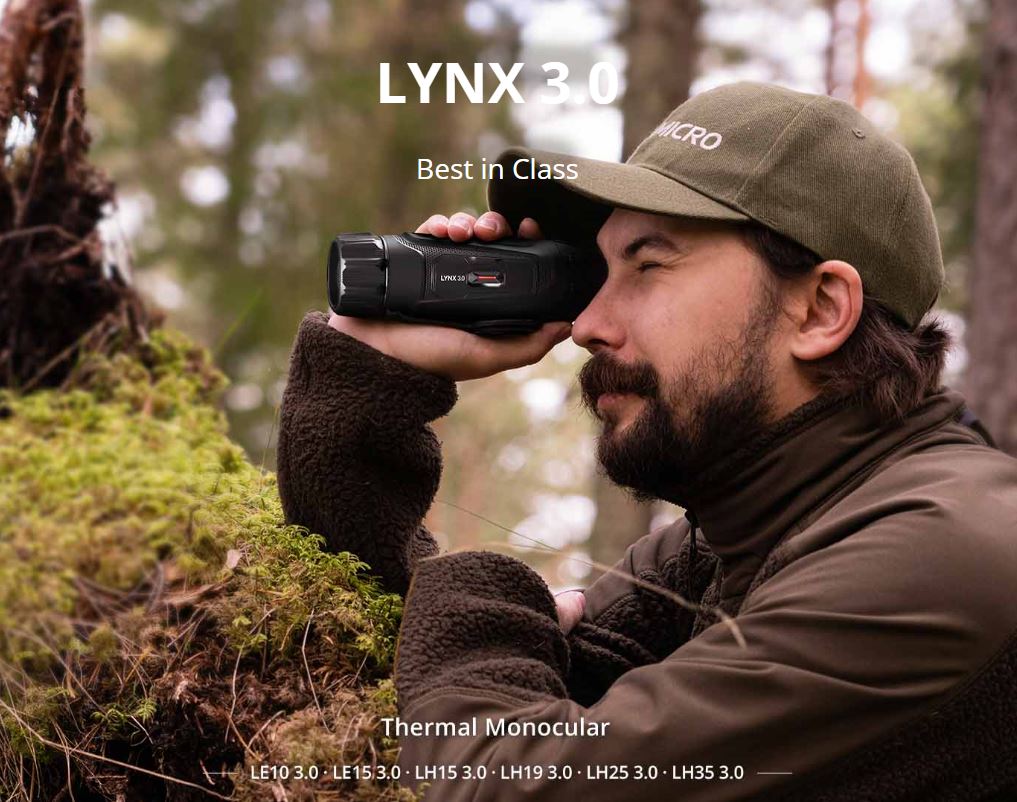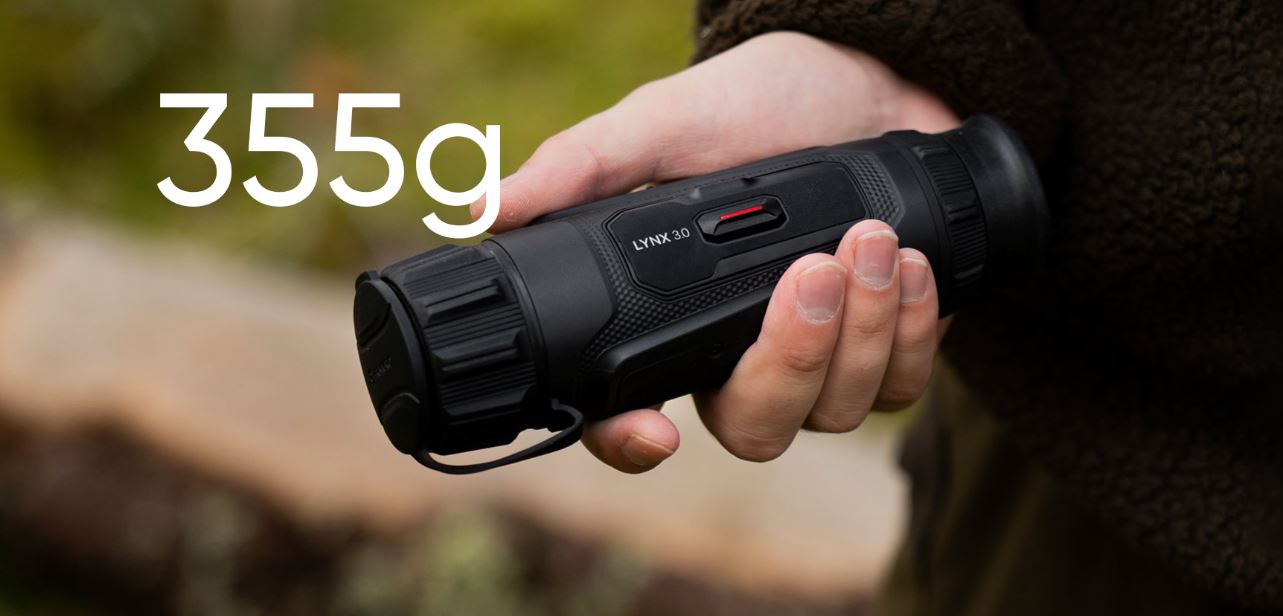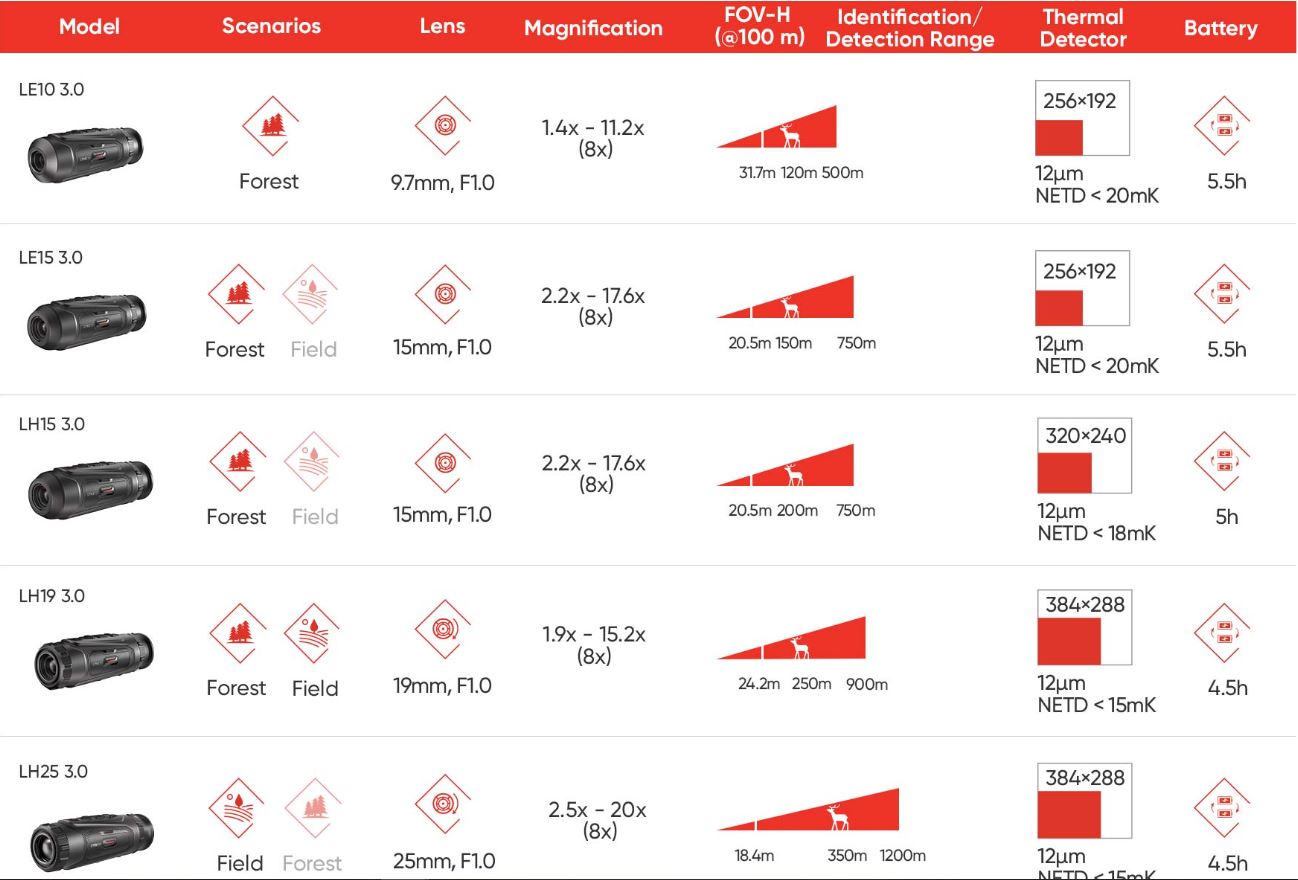Trading : 7am to 5pm (Mon-Sun)
Call Us : (03) 7071 0777
Email Us : sales@primalhunter.com.au
NEED HELP?
Hours: 7am-5pm (Mon-Sun)
Ph: (03) 7071 0777
E:sales@primalhunter.com.au

When it comes to thermal monoculars for Australian hunting conditions, the Hikmicro Lynx series has always been a favourite thanks to its reliability, value and compact size.
The new Lynx 3.0 lineup continues this trend but brings a surprising list of upgrades once found only in higher tier models.
For hunters choosing between the Lynx 3.0 and the previous Lynx 2.0 generation, the differences are more significant than they first appear.

One of the biggest similarities is the continuation of the 384×288px thermal resolution sensor in select Lynx 3.0 models.
This ensures that hunters who appreciated the dependable image quality of the 2.0 models can still access the same sensor tier without paying more.
It means the familiar balance of clarity, detection range and affordability is still firmly intact.
Another key similarity is that Hikmicro has kept the Lynx 3.0 models firmly in the entry level price bracket.
Hunters who appreciated the ‘bang for buck’ appeal of the Lynx 2.0 will be pleased to see the 3.0 series delivering stronger performance without the usual price hike that comes with a new generation.
Even the top end LH35 (loaded with all the bells and whistles, comes in at $2399.00) which is great news in today’s cost of living climate where value matters more than ever.

The Lynx’s iconic small and lightweight design also remains unchanged.
Aussie hunters who spend long nights scanning paddocks or hiking through thick scrub will appreciate that the Lynx 3.0 still slips easily into a pocket and won’t weigh down a bino harness.
Portability is a huge selling point, and Hikmicro wisely decided not to mess with a good thing.

One of the biggest upgrades with the Lynx 3.0 series is the expansion into smaller lens models, particularly the new LE10 (10mm lens) and LE15 (15mm lens).
These compact units are purpose built for tight bush conditions and close range scanning where field of view is more important than magnification and identification/detection range.
This makes the 3.0 range more adaptable to different environments than the 2.0 series ever was.
The introduction of 256×192px (LE10S & LE15S) and 320×240px (LH15) sensors widens the resolution choices available to hunters.
This means buyers can choose models based on budget, hunting style and performance sweet spots rather than being locked into a single resolution tier.
Whether you're scanning thick Victorian high country or watching longer paddock lines, there's a resolution profile to match.

Perhaps the most surprising change is the addition of Image Pro and Zoom Pro image enhancement technologies to the Lynx 3.0 LH models (LH15, LH19, LH25 and LH35).
These algorithms were previously only found in higher-tier Condor, Condor 2.0 and Falcon 2.0 units costing over $2600.
For the first time, hunters on a tighter budget can access premium image processing that helps retain detail, especially at higher zoom levels.
These enhancements sharpen target outlines, reduce pixelation and improve real-world identification confidence.
At longer distances and across more varied terrain types, these improvements make a significant difference. The result is a viewing experience that punches far above typical “entry-level” expectations.

Thermal sensitivity takes a noticeable leap forward in the Lynx 3.0 models, dropping to an impressive ≤15mK from the Lynx 2.0’s 20mK.
This means the 3.0 models can detect smaller temperature differences, giving clearer images in wet, humid or cold conditions where thermal contrast is low.
For Aussie hunters scanning foggy gullies, frosty paddocks or dense timber after rain, this improvement is immediately useful.

One of the most frustrating quirks of the Lynx 2.0 was the occasional shutter recalibration during crucial moments—an unavoidable mechanical click and screen freeze that could cost you sight of a moving target.
The Lynx 3.0 introduces shutterless imaging, meaning no interruptions, no flicker and no split second moments lost.
Again, this upgrade was previously reserved for Falcon 2.0 and Condor 2.0 units, making it a remarkable addition to the budget tier.
Hikmicro also quadrupled the onboard storage from 16GB in the Lynx 2.0 to 64GB in the Lynx 3.0.
For hunters who like recording night hunts, capturing pest control footage or saving clips for later review, this is a massive quality of life upgrade.
You'll no longer have to delete old videos mid hunt or worry about maxing out the memory.
To help Aussie hunters choose the correct model for their needs, here are three practical real-world scenarios.
Example 1 – Budget Hunter in Thick Victorian High Country
This hunter operates in dense shrub, tight gullies and heavily timbered terrain where engagement distances rarely exceed 50 metres.
In this case, fancy features like shutterless imaging or advanced zoom aren’t priorities, he simply needs to spot heat amongst the scrub and switch to his day optic for positive identification.
The LE10S is the perfect fit thanks to its wide field of view, 256×192px sensor and extremely affordable price point.
With a 500m detection range and around 120m identification capability, the LE10S easily covers the distances relevant to this terrain.
The wider FOV gives better situational awareness in close quarters, making it ideal for bush stalking.
Despite being the most budget friendly model, it’s the smartest option for this hunter’s environment and goals.

Example 2 – Hunter Splitting Time Between Open Fields & Bush
This hunter needs a versatile monocular that can handle both short range scanning in scrub and mid range spotting in open paddocks.
The LH19 3.0 is a strong option thanks to its wider FOV, making it great in tight bush, while still offering solid performance out to roughly 200–250m for identification.
However, hunters who routinely ID game at longer distances may find this limiting in wide open country.
For more open areas, the LH25 3.0 steps up with a narrower FOV and stronger identification range of roughly 300–350m.
Its 1200m detection range also gives plenty of reach for covering clear paddocks, hill faces or long creek flats.
Both the LH19 and LH25 include shutterless imaging and Image/Zoom Pro enhancements, offering exceptional value for hunters who want premium tech without premium pricing.

For shooters patrolling broad farmland, rolling hills or large cropping paddocks, long range detection is essential for efficiency and vehicle-based scanning.
While Falcon and Condor models offer top tier performance, their price tags can be out of reach for some operators.
The Lynx LH35 3.0 fills this gap perfectly with an 1800m detection range and up to 500m ID range.
Mounted on a vehicle roof or used handheld, the LH35 lets pest controllers detect, identify and plan their approach before burning fuel driving closer.
Its narrower FOV is ideal for long distance scanning, helping pick up heat signatures quickly and track movement across huge paddocks.
With Image Pro, Zoom Pro and shutterless imaging, the LH35 delivers near top tier performance at a much friendlier price.
The Hikmicro Lynx 3.0 series isn’t just a minor refresh, it brings major performance upgrades, expanded model options and premium features that used to be locked behind much higher price points.
For Aussie hunters, the result is a lineup that caters to every environment, from thick bush to open farmland, while keeping costs accessible.
Compared to the Lynx 2.0, the improvements in sensitivity, storage, feature set and imaging technology are substantial.
Whether you're a weekend hunter, a budget conscious beginner or a contract shooter scanning huge properties, there's a Lynx 3.0 model that fits your needs perfectly.
If you’re after a side by side comparison of key features, then check out our comparison table below.
And if you're still scratching your head about which model to go for, then drop us a line on (03) 7071 0777 or email sales@primalhunter.com.au and we’ll help you find the best fit for your hunting or farm management needs.
That’s the Primal Hunter Promise - real advice, no fluff, and recommendations built around the way you hunt.


Leave a comment